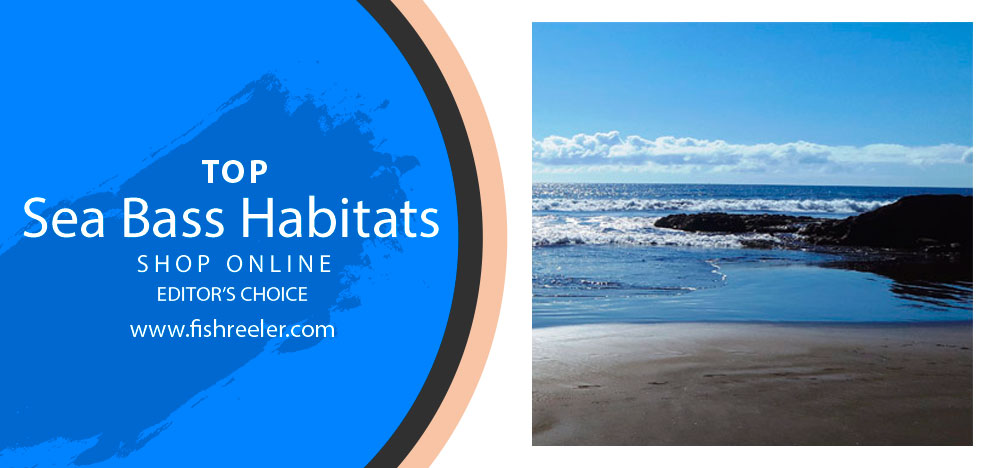
Understanding Sea Bass: Habitats and Catching Techniques 🐟🌊
Why Dive into the World of Sea Bass?
Sea Bass, with their sleek, powerful builds and elusive nature, are not just any fish in the sea. They’re a species that commands respect and fascination, both for recreational anglers and culinary enthusiasts around the globe. But why should you care about their habitats and catching techniques? Let’s cast into the reasons:
✅ Ecological Significance 🌍: Understanding their habitats helps in preserving the delicate balance of marine ecosystems.
✅ Angling Satisfaction 🎣: Knowledge of their habitats and behaviors directly influences the success and thrill in angling.
✅ Culinary Delight 🍽️: For foodies, knowing where and how Sea Bass are caught ensures the freshest and most sustainable choices.
✅ Conservation Efforts 🛡️: Informed fishing practices contribute to the sustainability of Sea Bass populations.
✅ Educational Value 📚: Learning about Sea Bass habitats enriches our understanding of marine biology and environmental science.
Stay tuned as we explore the dynamic habitats of Sea Bass and unveil the most effective techniques to catch these majestic creatures of the sea! 🌊🐟
Unlocking the Secrets of Sea Bass Fishing: A Comprehensive Guide 🎣
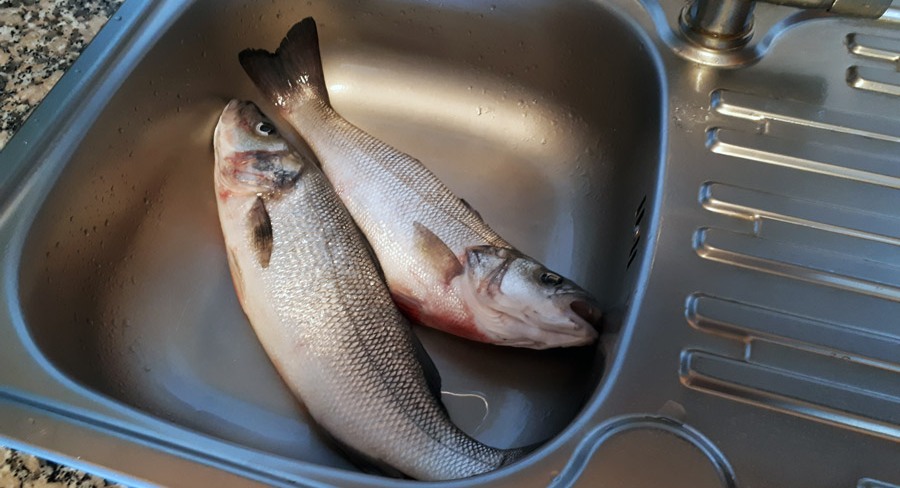
The Allure and Challenge of Sea Bass Fishing
Sea Bass fishing, a pursuit that blends skill, patience, and a touch of mystery, stands as one of the most rewarding experiences for anglers worldwide. These elusive fish, known for their fighting spirit and delectable taste, offer a unique challenge that captivates both novice and seasoned fishermen alike.
But what makes Sea Bass so sought after? It’s their ability to outsmart even the most experienced anglers, combined with the diversity of their habitats—from shallow estuaries to deep coastal waters. This versatility in their nature not only adds to the excitement of the chase but also requires a strategic approach to fishing, making every Sea Bass catch a triumphant achievement.
Importance of Understanding Habitats
Why focus on habitats? Simply put, knowledge is power in the world of fishing:
☑️ Predicting Behavior 🌊: Understanding the preferred habitats of Sea Bass—be it rocky bottoms, near underwater structures, or estuaries—allows anglers to predict their behavior. Knowing where these fish are likely to feed or hide gives you a significant edge.
☑️ Seasonal Movements 🗓️: Sea Bass migrate and change their location based on the season. Being aware of these patterns ensures that you’re fishing in the right places at the right times.
☑️ Bait Selection 🐟: Different habitats dictate different diets for Sea Bass. Knowing their habitat informs you about the most effective baits and lures to use in a particular area.
☑️ Conservation Awareness 🛡️: Familiarity with Sea Bass habitats also means understanding their ecological role, helping anglers to engage in more sustainable fishing practices. 🌟🐟
Understanding Sea Bass – The Key to Masterful Fishing 🌊🐟

Biological Overview of Sea Bass
Species Description
Sea Bass, a term often used to describe a variety of marine fish species, boasts some common physical characteristics that make them stand out. Predominantly, these fish possess a robust, streamlined body, making them strong swimmers. Their scales usually exhibit a silvery-gray to dark brown coloration, often with noticeable markings or spots, which serve as excellent camouflage in the underwater terrain. Most Sea Bass species range in size from moderate to quite large, with some species growing up to 3 feet in length and weighing over 20 pounds.
Geographic Distribution
Globally, Sea Bass are found in a wide range of locales, showcasing their adaptability to different marine environments. They primarily inhabit the temperate and subtropical waters. In the Western Atlantic, they’re seen from Maine down to Florida and into the Gulf of Mexico. Across the pond, European Sea Bass are a popular catch along the western and southern coasts of Europe, extending to North Africa’s Atlantic coast. The Pacific varieties are often found from Japan to California. This wide distribution makes Sea Bass a common target for anglers in many parts of the world.
Sea Bass Behavior
Seasonal Patterns
The behavior of Sea Bass changes markedly with the seasons, an understanding of which is crucial for successful fishing:
- Spring: As waters warm, Sea Bass move closer to shore for spawning, making them more accessible.
- Summer: They tend to feed aggressively post-spawning, often found in shallower waters.
- Fall: As temperatures drop, Sea Bass start moving towards deeper waters.
- Winter: They’re found in deeper offshore waters, often forming large schools.
Feeding Habits
Sea Bass are opportunistic predators with a varied diet, which profoundly influences bait selection. Their menu primarily includes smaller fish, crustaceans like crabs and shrimp, and various mollusks.
This dietary preference means that both live baits (like minnows or shrimp) and artificial lures (mimicking the movement and appearance of their prey) can be effective. Seasonal changes also affect their feeding habits – during warmer months, their metabolism increases, leading to more active feeding, which should be considered when choosing baits.
Habitats of Sea Bass – Decoding Their Marine World 🌊🐠
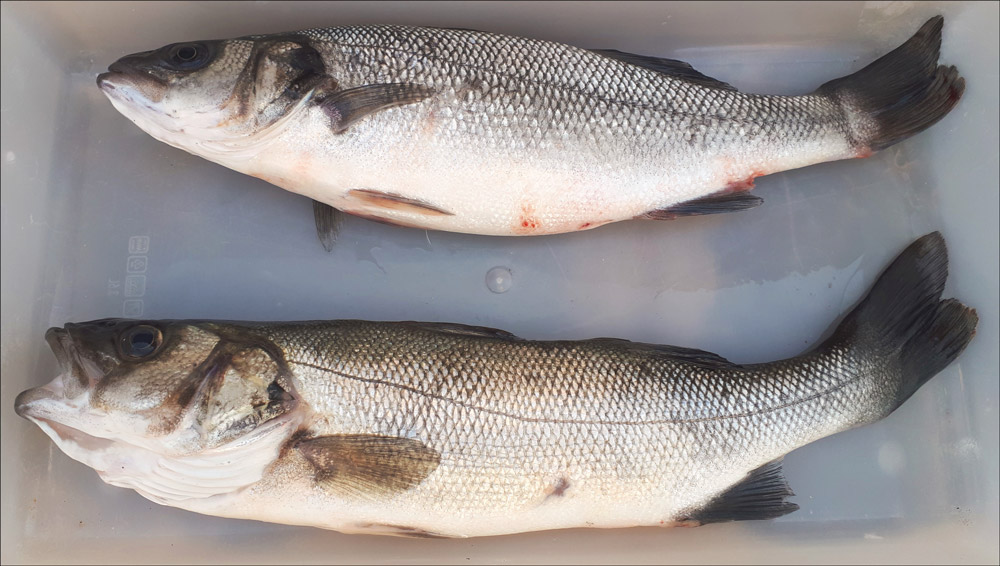
Types of Habitats
Coastal Waters
Coastal waters are a primary habitat for Sea Bass, particularly appealing due to their unique characteristics. These areas typically feature a mix of rocky substrates and sandy bottoms, interspersed with seaweed beds and occasionally artificial structures like piers or shipwrecks. Such varied terrains offer Sea Bass plenty of opportunities for both shelter and hunting, making these zones a hotspot for anglers. The proximity to the shore also means that these areas are more easily accessible for fishing, especially during the Sea Bass spawning season in the spring.
Estuaries and Bays
Estuaries and bays play a crucial role in the life cycle of Sea Bass. These brackish environments – where freshwater from rivers mixes with salty ocean water – provide an ideal nursery ground for juvenile Sea Bass. The abundant food supply and protective cover from predators in these areas are essential for their growth and development. Adult Sea Bass also frequent estuaries and bays, especially during spawning seasons, to take advantage of the rich feeding grounds.
Habitat Conditions
Water Conditions
- Temperature: Sea Bass prefer water temperatures ranging from 50°F to 70°F (10°C to 21°C), which is why they’re more commonly found in temperate regions.
- Salinity: They are adaptable to various salinity levels but thrive in areas where the salinity is moderately high, typical of coastal waters and the mouths of estuaries.
- Clarity: Clear to slightly murky water is preferred, as it aids their hunting yet provides enough cover from predators.
Bottom Composition
The seabed composition is a critical factor in Sea Bass habitats. They show a preference for areas with a mix of sand, gravel, rock, and patches of seaweed or other aquatic plants. These varied bottoms provide essential cover and rich hunting grounds, allowing Sea Bass to ambush prey more effectively.
Locating Sea Bass
Signs and Indicators
- Bird Activity: Observing seabirds can be a telltale sign of Sea Bass presence. Diving birds often indicate schools of baitfish, which attract Sea Bass.
- Baitfish Movements: Pay attention to the behavior of small fish. If they seem agitated or are jumping, it could indicate that Sea Bass are feeding in the area.
- Water Surface Activity: Look for ripples or disturbances on the water surface, suggesting the presence of feeding fish.
Tools & Techniques 🎣🐟
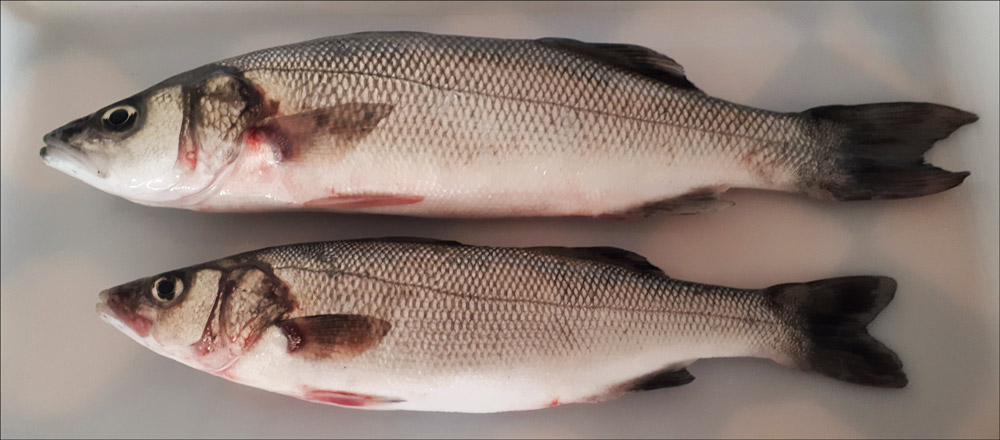
Tackle and Gear
Rods and Reels
For Sea Bass, selecting the right rod and reel combination is crucial:
- Rods: A medium to heavy-action rod, around 6 to 8 feet in length, provides the necessary strength and flexibility for handling Sea Bass. The length allows for better control during casting and fighting a fish.
- Reels: A spinning or baitcasting reel with a smooth drag system is ideal. Look for reels that can handle line weights of 10-25 pounds, ensuring they can withstand the pull of a feisty Sea Bass.
Lines and Leaders
- Lines: Braided lines are popular due to their strength and sensitivity, with a recommended test strength of 15-30 pounds. They allow for a better feel of the bait and subtle bites.
- Leaders: Fluorocarbon leaders are often used for their invisibility underwater and abrasion resistance. A length of 20-30 inches and a test strength slightly less than your main line is ideal.
Bait and Lures
Live Baits
The natural diet of Sea Bass makes certain live baits especially effective:
- Minnows and small fish mimic their natural prey.
- Crabs and shrimp are excellent choices in estuaries and bays.
- Always match the bait size to the average size of Sea Bass in your fishing area.
Artificial Lures
When it comes to lures, the key is to mimic the look and movement of the Sea Bass’s natural prey.
- Soft Plastics: Jigs with soft plastic tails in silver, white, or grey imitate baitfish effectively.
- Plugs and Crankbaits: These are great for mimicking larger prey. Use brighter colors in murky water and more natural colors in clear water.
- Spoons: Their reflective surfaces and erratic movements attract Sea Bass, especially in deeper waters.
Fishing Techniques
Casting and Retrieval
- Casting: Practice accurate and long casts to reach the ideal spots where Sea Bass may be lurking.
- Retrieval Patterns: Vary your retrieval speed and pattern. Sometimes a slow, steady retrieve works best, while other times, erratic jerks and pauses can entice a bite.
Drifting and Trolling
- Drifting: This method involves letting the boat drift naturally with the currents, allowing baits or lures to present more naturally to Sea Bass.
- Trolling: Effective in deeper waters, trolling involves moving the boat slowly while dragging lures or baited lines. It covers more area and can attract Sea Bass from a distance.
Tips From a Professional – Where and How to Catch Sea Bass in Tenerife
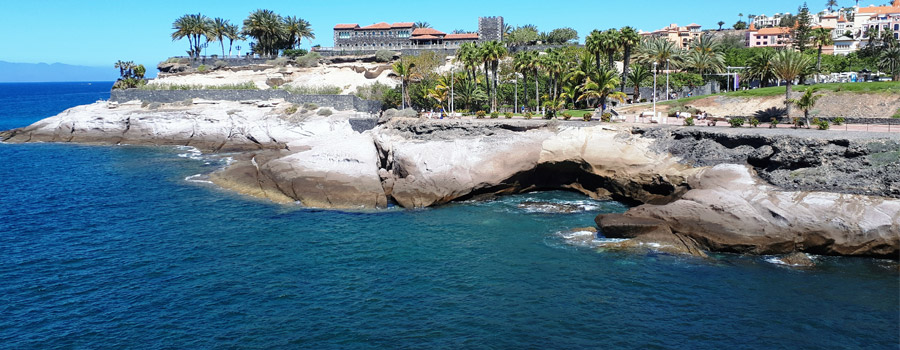
How can you spend and vary your vacation? I think you can not only swim, snorkel or dive in the ocean. You can fish in the evening or early in the morning or otherwise to hunt the “sea wolf“!
Seabass fishing is a great pleasure for the fisherman. Many fishing enthusiasts are interested in this fish. In order to fish for seabass in Tenerife, you need to buy a corresponding license for 3 years per fishing rod at a price of about 25 US dollars. Below is a sample fishing permit.
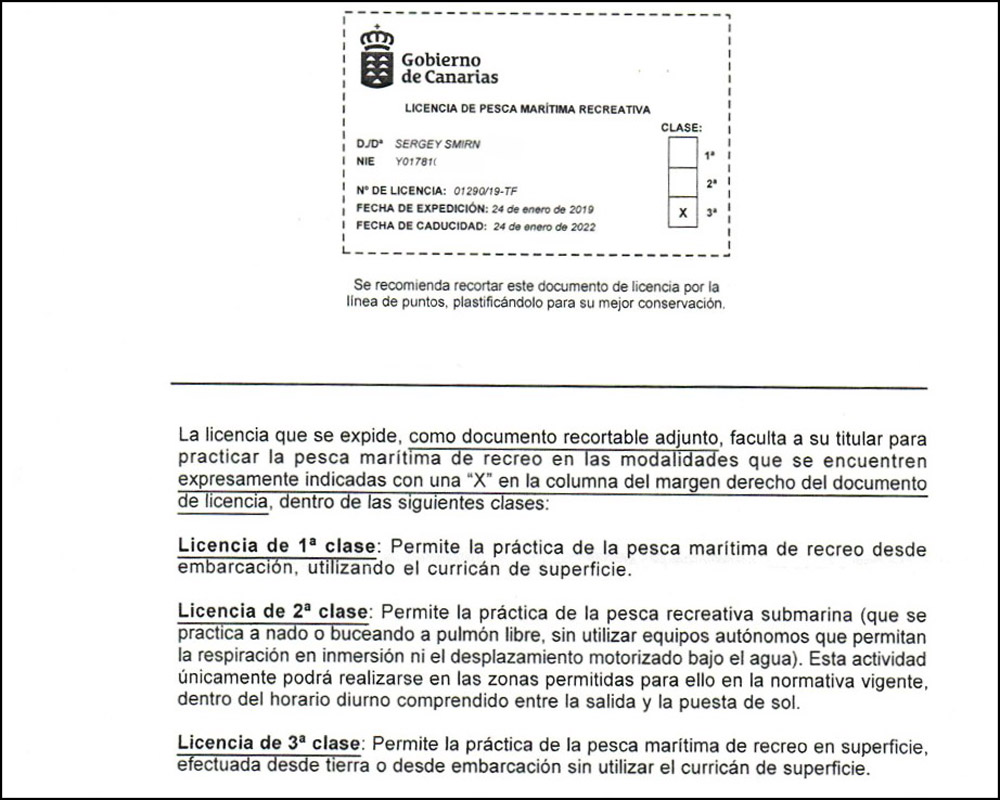
When these fish bite, a fisherman has the most pleasant feeling. The fish is the desired trophy for amateur fishermen and athletes for its taste. This predator has a cautious, even timid nature. The omnivorous glutton is able to make the fisher run along the shore. Seabass is fidget that’s why it doesn’t stay in one place for a long time and moves from one place to another as part of the pack. Sea bass is not tied to certain depths and moves freely in the water from the bottom to the surface.

How to catch the squirt? How to feel the fish on the hook? What tackle and bait to use when fishing sea wolf? How to lure and get the long-awaited trophy? Answers to these questions and not only you will find in this article. It is a nimble and fast predator. Most often this fish is caught in high tide zones where it feeds. The bottom should be stony or sandy. The fish can be found in shallow waters, which are formed after ebbs.

It is better to catch sea bass for 3 hours before the main peak of the tide. Fishing lasts no more than 3 hours. When the ebb starts, it is time to end fishing. The most optimal time for sea bass fishing is from June to December. The most active biting occurs at dusk at sunset. Excellent to catch seabass with spinning at night. Biting is often better when the wind blows. You can also experience all the delights of fishing for this fish with a spinning tackle. The most effective lures are silver spinners or white silicone fish.
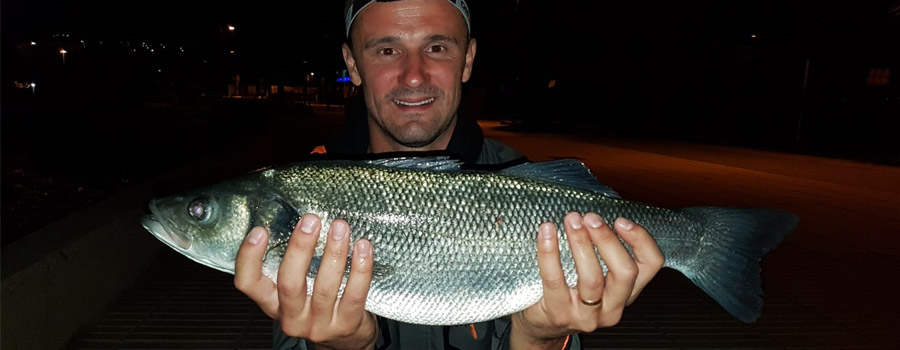
It is best to catch with spinning from a rocky shore because the fish tends to these shores at high tide. A lot of small fish coming out of hiding at low tide accumulates there at this time. The catch is almost at the shore that’s why it is not necessary to make long-distance casts. When fishing for seabass, you can use both sinking and surface lures. It is also convenient to catch sea wolf on sandy beaches. In this case, the casting is done, as a rule, at a distance of 30 meters. If the depths are small, it is more practical to use surface models.

General Description of Sea Wolf
The seabass has a massive and elongated body towards the tail, the head has a pointed shape, covered with minute scales, with silver color on the sides and olive shade on the back. There are two sharp fins on the back. The fins can pierce a man’s hand without problems. Also, there are spines on the head, near the gill part of the fish. Nature rewarded sea bass with a big mouth. Most often people catch fish with a length of 30-60 cm.
Distribution and Habitats
This fish lives in the Atlantic Ocean, including the Canary Islands. It prefers to stay close to the coast, preference is given to the base of the rocks. It is best to catch sea bass there. Young seabass usually lives in a school of fish, then growing up, it becomes single. Seabass is a predatory fish and its ration consists of small fish, crabs, shrimps, and shellfish.
During hunting or search for food, sea bass enters the port area, shallow coastal areas, where it feeds on shrimp, worms, crabs, and shellfish. At dawn, if in such coastal places small fish jumps out of the water, then here you can hunt.
Age and Size
Seabass is a large strong fish, body length can reach 1 m. At the same time, the weight can be 10 kg. Seabass refers to long-lived fish. The age of sea bass can reach 15 years.
Seabass Lifestyle
The fish live in surf zones at a depth of no more than 30 m, rich in oxygen and sharp descents to deep-sea places. Sea wolf leads to a predatory lifestyle. The fish also keeps in small groups. Mature large individuals prefer single swimming. There is no real-time when to catch this fish. It can be active throughout the day and you can catch a predator all the year round.
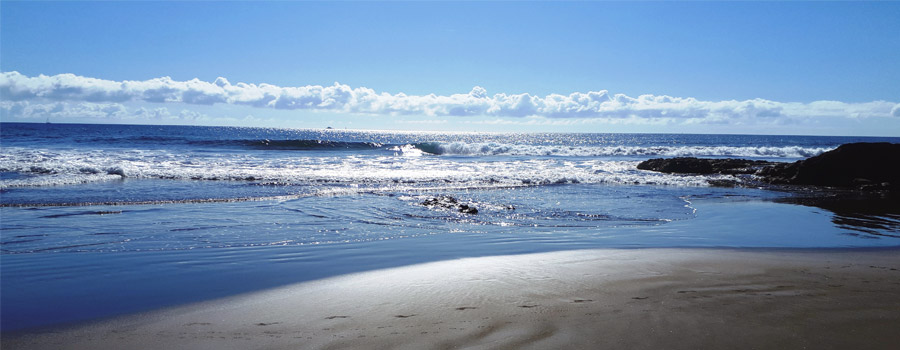
Small seabass hunts a flock of shoals of small fish. She practically swims to the shore just behind the wave, which sometimes you can see even during the day on the beach. Large individuals attack their prey quickly, making a short and sharp throw. They pull their prey right to the bottom.
How, Where, When and What to Catch
Fishing takes place all-year-round and round-the-clock in coastal areas. The main fishing methods are fly fishing and spinning. Fishing rods should be selected suitable for fishing in seawater. As for the coil, she also shouldn’t be afraid of saltwater.
In What Weather is it Best to Catch Sea Bass?
Active biting is observed after the storm when all the small fish are carried to the shore by the waves. The successful catch will be at dawn is calm and windless weather from the piers and berths. The ideal water temperature is 18 degrees.
In What Places is it Best to Catch?
- Rocky areas;
- Sandy bottom with algal vegetation;
- Zone of the breakwaters;
- Coastal cliffs;
- Piers;
- Berths;
- Seaport (especially in places of the release of food waste).
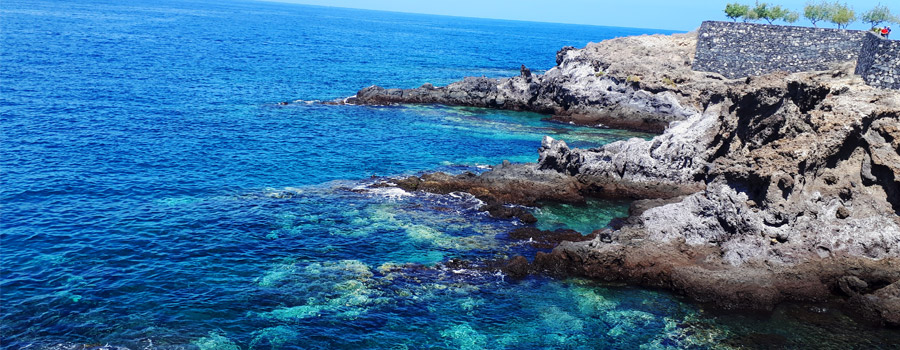
What Tackle is Best to Catch Sea Bass?
If fishing occurs from the pier, from the berth, or with big stones, the best tackle will be an afloat rod for long-range casting, equipped with a sinking sinker. It is better to use a thin fishing line when using a spinning rod or wicker, as the “sea wolf” by nature is timid and easily notices the snap. A carp fishing rod length up to 3.5 meters, with a small fixed-spool or multiplier reel, is quite suitable for fishing. The fishing line is used with dough for a gap of up to 10 kg.
Example, equipping rods:
- Tackle length not less than 4 m with dough from 50 g
- Fixed-spool reel with salt protection;
- The main fishing line length from 0.20 to 0.25 mm, transparent, fast-sinking, and durable;
- Weight 45-65 g (elongated and flat);
- Sharp hooks numbers 6, 7, 8.
Advice:
- It is possible to use different types of fishing cords (slow, floating, fast-sinking).
- The rod is recommended for spinning fishing, elastic which allows you to throw the bait far.
As bait you can use:
- Pieces of fillet of small fresh fish
- Crustaceans (shrimps, crabs)
- Chicken pieces
- Mixture: special paste marked ” for sea bass», sardine oil, black granules for lubina
- A variety of bait based on mixtures of flour, oil, dough, processed cheese, bait for sardines, pasta with the smell
Method of preparation of bait: finely chopped pieces of crab (shrimps) and fish are mixed in a capacity. In this mince, you can add aromatizers, for example, the juice of the fish meat, best-suited juice from sardine meat.

Next, the mixture is laid out in the feeder, from which in contact with water is gradually washed away, leaving behind a long and fragrant trail of fish smell. The feeder is equipped with a sinker for lowering to the seabed.
On What Baits and Nozzles Sea Bass is Caught?
Animal baits:
- Live bait – any small fish with a light color. This bait is hooked on a hook under the dorsal fin. It is recommended to use a tackle with two wires, where one hook is attached near the edge of the ridge and the other on the lip. The sting of the hooks should be free so that it could definitely enter the bony jaw of the predator.
- Shrimp. Bait should be alive or fresh because when the shrimp spoils it loses its pink color and fishing efficiency is reduced.
- Pieces of squid.
- Worm (Nereis, Dendrobena).
- Cuttlefish.
- Octopus.
- Pieces of chicken fillet.
The main types of artificial baits and lures:
- Metal lure length from 5 to 15 cm with two tees for adult fish weighing more than 2 kg.
- Plastic lure length from 5 to 10 cm.
- Silicone baits size from 5 to 9 cm, white or gray shades (maybe glowing);
- Castmaster;
- Foresight;
- Spoon (flat and silver);
- Poppers;
- Octopus;
- Artificial fish (they are applied when fishing from rocky areas).
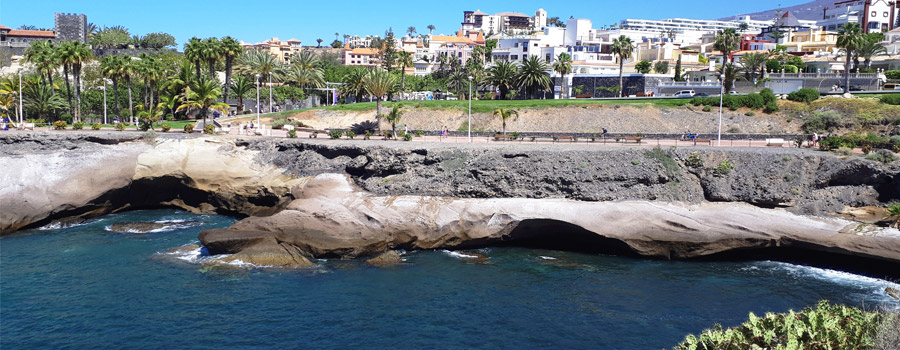
Tactics of using baits in different weather conditions:
- In calm and with a wave up to 0.5 meters – soft silicone lures
- Wave from 1 meter with foam – wobblers from 70 to 100 mm
What colors of nozzles to use at different times of the day?
- Dawn-white, silver, white-yellow;
- Early in the morning – red, white, blue;
- From lunch to evening-white;
- In the dark time of day — glowing purple color nozzles.
Advice:
- Interrupted wiring when you use artificial tips,
- it is better to use slowly sinking artificial shrimps and foresight when fly fishing.
The search for the school of fish and catching better start with the use of more small nozzles and gradually increase their size.
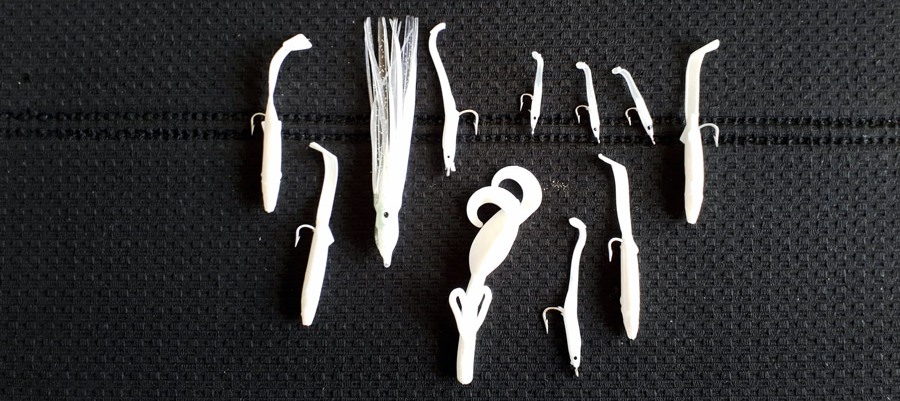
How Do the Fish Get Hooked?
Seabass cautiously tries and studies the bait before getting hooked. Then the fish sharply attacks and captures. It has no teeth, that’s why immediately swallows the bait.
How to Catch “Sea Wolf»? Basic Technique.
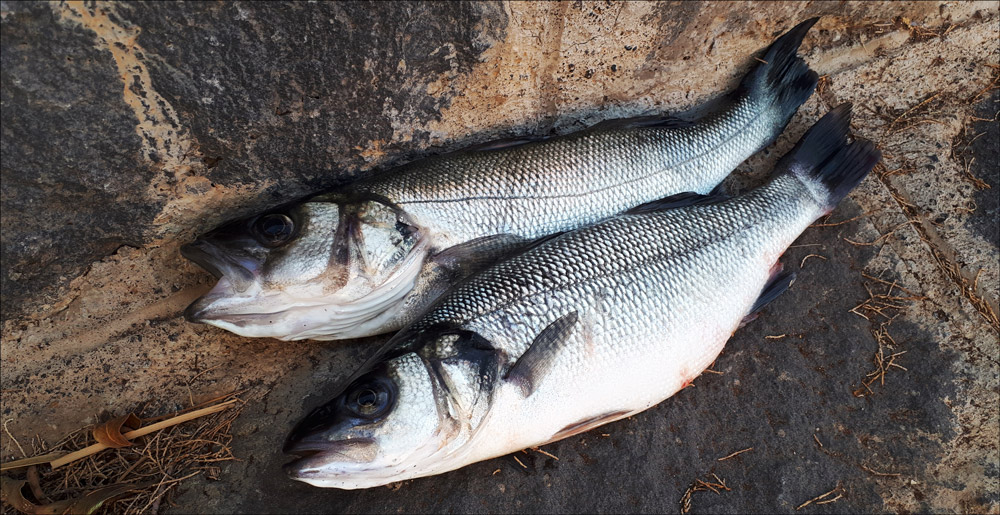
Wiring should be carried out until the end because the “sea wolf” is able to chase prey to the shore. When using a floating tackle, the landmark of throwing is the “wave of the sea wolf». This is a water area on which the water foams from the waves. Throwing should be done at 5 or 10 m for this foamy area.
Secrets of fishing float tackle:
- Places are rocky shores, boulders;
- Small wave;
- To use sensitive tackle, but high quality and durable;
- To use a strong fishing line;
- To use not large and sharp hooks;
- Sensitive and lightweight float.
It is recommended to do the wiring slowly from the foamy water to the coastline when spinning fishing. The best option in choosing a fishing spot is rocky shore at high tide and time of day are evening and night.
Important!
Hooking fish is necessary when you are sure of its strong hook. Seabass is a cautious fish. Don’t make a rush wiring. The most important moments when catching sea bass.
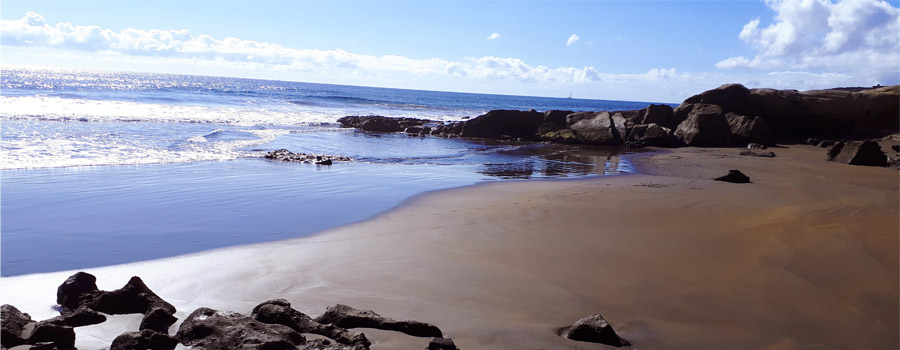
In the process of fishing, you need to be in constant search of fish in coastal areas, fishing in one place may not bring results. Bait is better to throw over the crest of the wave and lead to the next. if it was covered by a wave, then wait for a little and continue wiring. It is better to put everything you need in a bag on your belt because fishing occurs in constant motion.
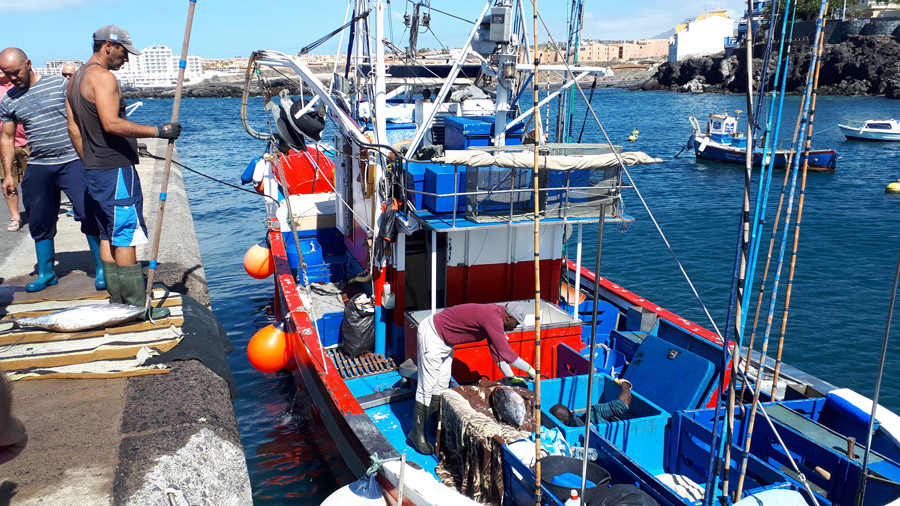
Conclusion: Your Pathway to Successful Sea Bass Fishing 🌟🎣
In this comprehensive guide, we’ve navigated through the essential aspects of Sea Bass fishing:
- Understanding Sea Bass: We delved into their biological characteristics, global distribution, seasonal behaviors, and feeding habits.
- Habitats of Sea Bass: We explored their preferred environments, including coastal waters, estuaries, and bays, and discussed vital habitat conditions like water temperature, salinity, and bottom composition.
- Basic Fishing Methods: We provided insights into the best tackle and gear, effective live baits and artificial lures, and essential fishing techniques such as casting, retrieval, drifting, and trolling.
Final Thoughts on Sustainable Fishing
As you embark on your Sea Bass fishing adventures, it’s crucial to practice sustainable and responsible fishing:
- Catch and Release: Consider releasing some of your catch, especially the larger breeding individuals, to help maintain healthy Sea Bass populations.
- Respect Local Regulations: Always adhere to local fishing regulations, including size limits and catch quotas.
- Environmental Awareness: Be mindful of your impact on the marine environment. Dispose of tackle responsibly and avoid disturbing sensitive habitats. 🐟🛥️
Appendices: Expanding Your Sea Bass Fishing Journey 📚🐟
To further enhance your Sea Bass fishing knowledge and contribute to the fishing community, here is a curated list of resources, from educational material to conservation groups and local fishing communities.
Educational Material and Guides
- Sea Bass Fishing: A Complete Guide – An in-depth online resource covering everything from beginner tips to advanced techniques.
- Fisheries and Oceans Canada – Offers extensive information on fish species, including Sea Bass, their habitats, and conservation status.
Local Fishing Groups and Forums
- Bass Anglers Sportsman Society (B.A.S.S.) – A community for bass anglers with resources, competitions, and forums.
- World Sea Fishing Forums – A platform to connect with fellow Sea Bass anglers, share experiences, and get advice.
Conservation and Sustainable Fishing Efforts
- The Marine Conservation Society – Focuses on protecting marine environments and offers guidelines for sustainable fishing.
- Recreational Fisheries Conservation Partnerships Program – A Canadian initiative supporting habitat restoration projects, including those benefiting Sea Bass.
Mobile Apps for Anglers
- Fishbrain – A popular app that provides local fishing maps, forecasts, and social networking features for anglers.
- Navionics – Offers detailed nautical charts and advanced mapping features, invaluable for locating prime Sea Bass habitats.
By exploring these resources, you can deepen your understanding of Sea Bass, connect with a community of passionate anglers, and contribute to the preservation of our precious marine ecosystems. 📘🌍🐟

I live in Tenerife (Canary Islands) for the last 10+ years and share my daily fishing experiences on my website. Many years of personal experience as a fisherman and the vast experience of my friends allow me to write professionally on any fishing topics (from choosing a flashlight and equipment to deep-sea fishing).
All of my advice is based on practical real-world experience and will be useful to both novice anglers and professionals. Read more about the author.
Affiliate Disclosure: FishReeler.org sometimes gets paid for listings, through sponsors or affiliate programs like Amazon, Ebay, Cabelas, Bass Pro Shop, Shimano, Daiwa, Rapala, Renn, Okuma, KastKing, etс. Clicking a link helps keep FishReeler.org free, at no extra cost to you!
About the author: Each article is verified by the fishing expert Sergio Smirnoff. The articles are written by professional and amateur fishermen with 20+ years of fishing experience.
Note: The views and opinions expressed in this article are those of the authors and do not necessarily reflect the official policy or position of any agency. The articles are for informational purposes only, share your opinions in the comments and join the fishing discussions, let's share our fishing experiences together!

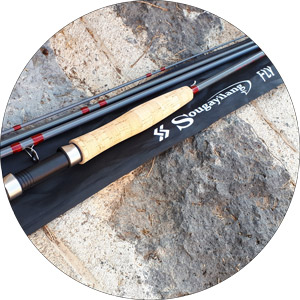
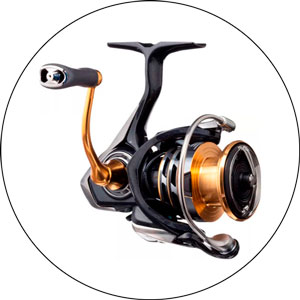
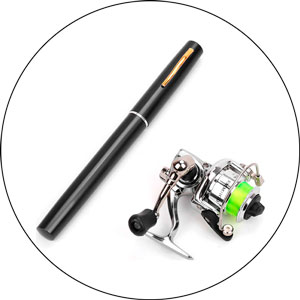

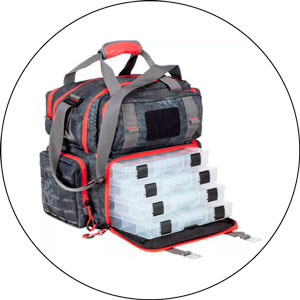
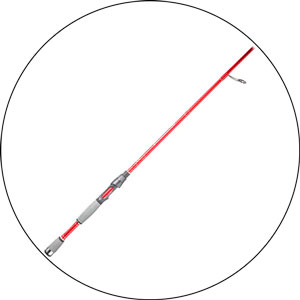
I absolutely love catching bass! The great thing about these fish is that they can be caught with almost anything – whole small fresh fish like sprats or fish strips are fantastic choices, especially with mackerel, herring, and squid. Sandeels, shrimps, and hermit crabs (claws removed) also work wonders.
Fresh bait like crabs (peeler or softback), prawns, and shellfish can also be used to catch bass. Interestingly, ragworms and lugworms are perfect for night fishing. For artificial baits, rubber or plastic sand eels, plugs, and devon minnows are excellent choices.
The good news is that bass can be caught all year round, with the best results being between May to October. During November, the bigger bass migrates to deeper southern waters and returns during May and June.
Bass can be found in rough, turbulent inshore waters along rocky shorelines and they also feed over reefs and fast tidal currents along sandy shores. It’s fascinating that they can even be found feeding in river estuaries, harbors, and even meters up tidal “freshwater” rivers.
I absolutely love fishing for bass! Even though they may not be as plentiful as they were 30 years ago, you can still find them throughout the UK, Ireland, and European coastal regions. So, if you’re planning a summer holiday near the coast, chances are you’ll be able to go bass fishing.
Estuary bass fishing is an excellent choice for beginners. Bass often frequent areas where freshwater meets salt, so do some online research before your trip to learn more about spring and neap tides.
In the past, I used to fish during very high tidal changes known as “springs,” but now I look for steadily building tides, falling tides around changing moon phases, and even relatively small tidal changes known as “neaps.” These conditions usually mean less suspended weed to foul your lure and provide predatory bass with ample time to hunt among the gullies and mussel beds often found in estuarine areas. It’s a good idea to keep a basic diary recording tide, wind, and weather conditions to establish a pattern for your chosen location.
Early mornings are an excellent time to go fishing, especially while the family is still asleep. An ebbing tide also provides the opportunity to fish without worrying about being cut off by rising water. However, be aware of strong currents, and take note of when the tide will change and begin to flood, as this can be an excellent time to fish. It’s easy to become so engrossed when the bass is biting that the water covers the route back to shore, so keep an eye on the tide.
When fishing for bass, make sure to cast along gullies and across them while searching for fish-attracting weed beds. These features offer shelter for crabs, shrimp, sand eels, and other fish that bass feed on, and they’re also areas in which bass camouflage themselves to unleash surprise attacks on their prey. You may be surprised to find bass in shallow water, so always fish your lure up to the last few cranks of the reel!
I find boulder-strewn beaches to be exciting locations for bass fishing. However, I do acknowledge that this can be a challenging task, especially if your time is limited by family holiday commitments. Locating successful marks can take years of dedication and meticulous note-taking. But worry not, online research and local tackle shops can offer a source of information on popular locations such as Kimmeridge in Dorset and Morte Point in North Devon.
If you’re interested in guided fishing, shore-based bass guides are becoming more commonplace, offering access to secluded rock fishing in exchange for a fee. A good guide will ensure that you are safe, hold insurance, carry equipment, and teach you how, when, and where to fish. Do your research beforehand and choose a guide who has a reputation for entertaining and informative services with satisfied customers who have left positive reviews on their social media pages.
If hiring a guide is not feasible, then refer to books and websites. When visiting a rock mark, always observe your surroundings and take note of the features just like in estuaries. Pay attention to pinnacles which are often surrounded by the fizzed-up water bass crave.
The presence of bait is also a good sign, especially when gulls begin to dive, often signifying bass attacking from below. Work a lure through these areas and you will almost certainly be rewarded, but act fast because both bait and bass move quickly, offering fleeting opportunities to benefit from such an obvious sign of their presence.
When it comes to fishing in a lake with no major structure, my go-to setup is an ultralight spinning setup with 10lb or less mono. However, if I’m fishing in heavy cover or lilies as we do here in the Everglades, I recommend a medium-heavy bait caster with 40lb braid or higher.
For bait, I always start with worms. I use 2/0 offset worm hooks and some bullet weights, trying both weighted and weightless options throughout the day. As for worm color, I switch between darker ones and green ones, sometimes even using junebug or watermelon pumpkin seed depending on the day.
The key to fishing with worms is to go slow, slower than you would think. Dragging the worm all over the bottom and giving it little flicks and flourishes along the way is usually the most effective. And when I feel even a little weight on the line, I’ll always set the hook. Sometimes it’s just a weed, but I’d rather be safe than sorry.
To really get to know a new fishing spot, I’ll fan cast from the bank every 20 feet or so, working every section to make sure there aren’t any fish or that they aren’t eating what I’m throwing. If I go over three sections of the bank without a strike, I’ll switch out baits, trying a different soft bait or maybe a hard bait like a spinner bait or jerk bait. Once I figure out what they’re eating, I stick with that bait until the bite turns off and then readjust from there.
That’s what I love about bass fishing – it’s a mental game. What color do they like today? Top water or bottom? Fast or slow retrieve? Sometimes they’ll eat the same thing all day, and other times I’ll be scrambling to find what they’re eating next and only really getting 20 minutes of a “bite” until their mood changes and they want something else.
Some of my favorite baits include Speedworms, Senkos, Spinnerbaits, Jerkbaits, Squarebills (great for rock cover or riprap), Ribbontail worms, and Creature baits like fake crawfish or lizards. And for almost all soft bait applications, I use 2/0 hooks and 1/8oz bullet weights. If it’s windier, I bump up to a 1/4oz weight, and if it’s calmer, I drop down to a 1/16th weight.
I also recommend watching YouTube videos to learn more. I personally enjoy Flukemaster for starting from scratch, but any of the other hosts mentioned are fine too. And subscribing to a service like Mystery Tackle Box can help widen your tackle selection and skill set.
Overall, with just $25 at Walmart, you can go from having nothing to landing a ten-pounder in just a few days. It’s a great hobby that anyone can get into with a little bit of practice and patience.
I would highly recommend using a heavy weedless jig with a soft plastic crawfish attached for weedy ponds with lily pad cover. Additionally, bring some heavy bullet weights (around 1/2 oz) and a variety of worms in different shapes and sizes.
When fishing along the edge of heavy weeds in more open water, I suggest using a topwater lure like a Jitterbug. While I’m not a huge fan of hollow-body frogs, many people have found success with them in heavy cover.
For versatility, I recommend using a medium power, fast action rod with 15 lb fluoro and a ~7:1 bait caster. In terms of classic bass fishing baits, my go-to lures include spinnerbaits, crankbaits, poppers, buzz baits, hollow-body frogs, jigs, and plastic worms (Texas rig, drop-shot rig, wacky rig, and Carolina rig).
To keep it simple and not get overwhelmed, I suggest focusing on spinnerbaits and plastic worms. Get some spinnerbaits in the 3/8 oz range with different colored skirts/jigheads and blade colors. For plastic worms, grab some 3/0 hooks, assorted bullet weights in the 1/16 – 3/8 oz range, and Gary Yamamoto Yamasenko in 4 and 5-inch sizes. Black and blue work great for overcast days, while pumpkin or watermelon colors work well for lighter days.
By focusing on these two types of baits, you can hone in on the fundamentals of bass fishing and increase your chances of catching some fish. Cast the spinner bait parallel to the shore and retrieve it back at various speeds, while with the worms, try a pop-pop reel-in-slack retrieve.